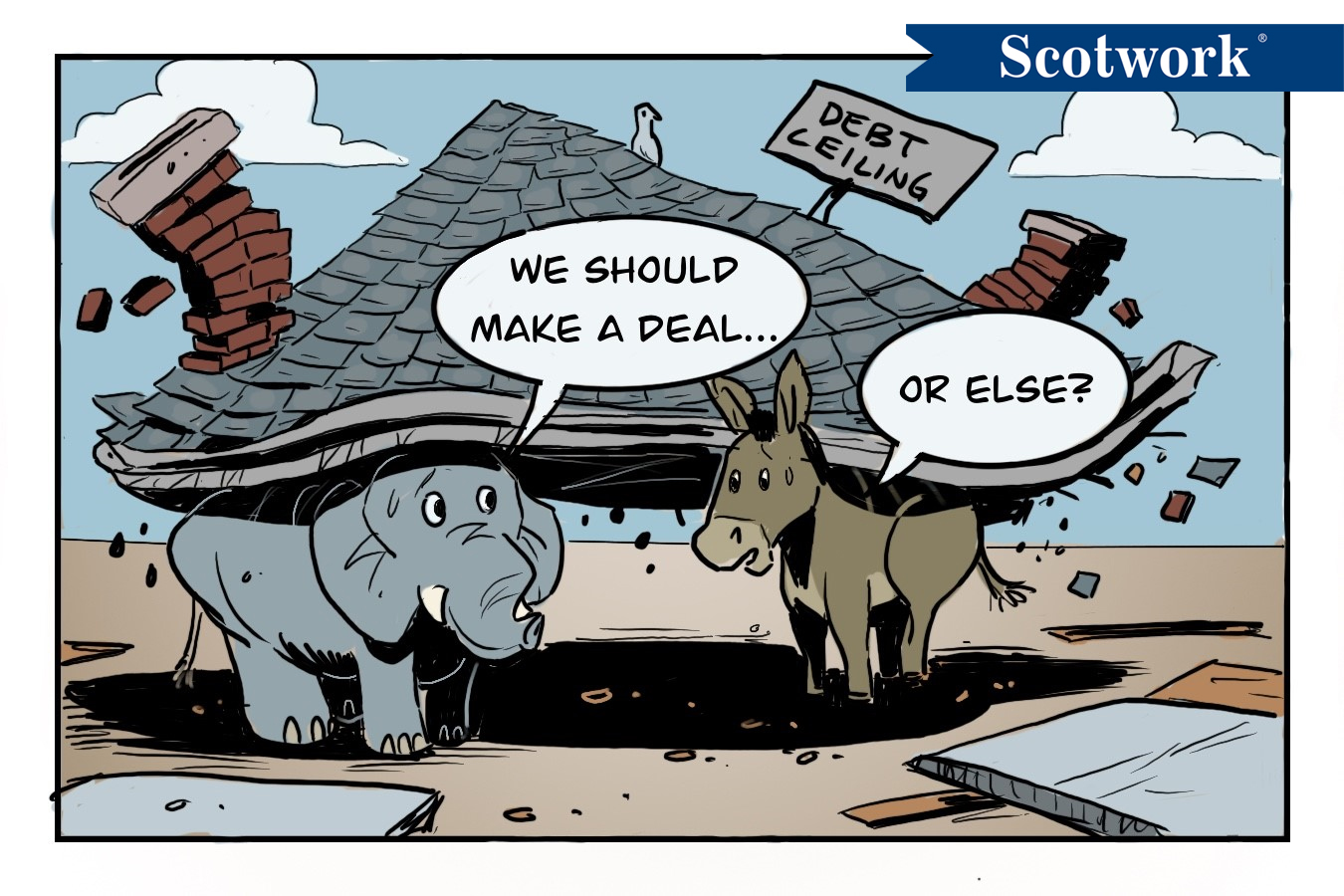It’s been fascinating to watch the debt ceiling negotiations. The bill passed the House with a 314-117 vote — 72% of the 435 members voting in favor. The Senate passed it with a 63-36 vote (60 votes were required for the bill to clear). Now it’s on to President Biden for signature. Along the way, it was interesting to see who stood up for it and against it, who crossed party lines, and if it would get done by the June 5 deadline. Now that a deal is done, did we actually see any good negotiating behavior?
All along the way, the rhetoric has been, “Raise the debt ceiling, or the US will default on its loans, and the economy will be plunged into certain doom.” As a parent, I’ve used the phrase “do it, or else” more times than I can count. As my daughters got older, it worked less and less. Yet over the past decade, we Americans have been threatened by the debt ceiling many times. So, why does the catastrophic rhetoric seem to work?
The simplest answer is the looming crisis behind the debt ceiling: Both parties seem to agree that there will be a mutually devastating outcome if a deal is not reached. If either party stops believing in mutually assured destruction, the “or else” will no longer matter.
Case in point: I was trying to impose my will when I used the “or else” with my daughters. When they were younger, my daughters followed along because they believed there was an actual “or else.” When they got older (and wiser), they were more willing to challenge authority, testing my resolve. I eventually abandoned the approach because, as they discovered, my “or else” was an empty threat and didn’t carry much weight. I eventually found more effective ways to work with my daughters (or at least I think I did).
In the case of the debt ceiling, since both parties believe that not having a deal would be mutually destructive, a deal is inevitable. In fact, we knew this when President Biden and Speaker McCarthy started talking about it in February. Yet there were numerous headlines of severe tensions — and that a deal might not be reached — during the negotiations.
My theory: The reason for the headlines was that each party was testing its power and ability to lay blame at the feet of the other party. If one party knew they could easily blame the other for the crisis, then that gave the accusing party power. Which meant their “or else” translated to “or else we will make sure the American people blame you for the disaster created.” However, as negotiations went on, it seems they discovered they would all be blamed equally, and it didn’t serve their needs to press that further — so a deal got done.
Along those lines, as the vote moved to the Senate, we heard Senators testing their ability to blame someone else. We heard some complaints that the deal is insufficient, more cuts or fewer cuts should be made, etc. But by that stage of the process, it was all posturing. Some used it to create sound bites for their political campaigns. Others used it to structure expectations of what they want in the next negotiation.
But in the end, the bill passed. Why? Because all involved had a common cause, which was to avoid a catastrophic impact on our economy. But more so because power remained in balance, and neither party could use this to their advantage. Let’s see how that changes in January 2025 — the next chapter in this ongoing “or else” negotiation.
We Can Help You Put the Other Side’s Threats to the Test.
Is your team being threatened with a devastating outcome if they don’t agree to the other party’s demands? We can help! Draw on Scotwork’s nearly 50 years of real-world negotiating experience to get better deals, save time, and create value that preserves and strengthens relationships. Partner with one of our advisers to ensure you have the optimum view of your deal.

